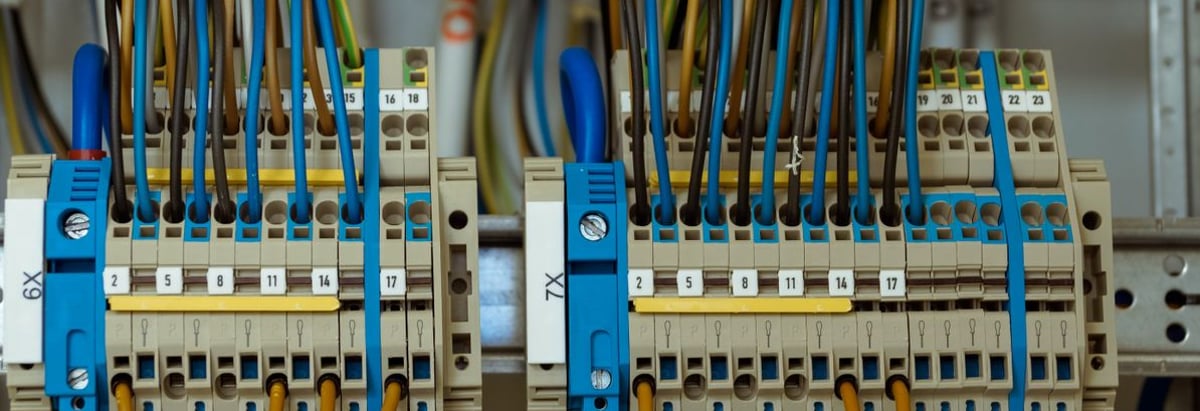- Malaysia
- /
- Electrical
- /
- KLSE:TAWIN
Does Ta Win Holdings Berhad (KLSE:TAWIN) Have A Healthy Balance Sheet?

Some say volatility, rather than debt, is the best way to think about risk as an investor, but Warren Buffett famously said that 'Volatility is far from synonymous with risk.' When we think about how risky a company is, we always like to look at its use of debt, since debt overload can lead to ruin. We note that Ta Win Holdings Berhad (KLSE:TAWIN) does have debt on its balance sheet. But the more important question is: how much risk is that debt creating?
What Risk Does Debt Bring?
Generally speaking, debt only becomes a real problem when a company can't easily pay it off, either by raising capital or with its own cash flow. In the worst case scenario, a company can go bankrupt if it cannot pay its creditors. However, a more usual (but still expensive) situation is where a company must dilute shareholders at a cheap share price simply to get debt under control. Of course, debt can be an important tool in businesses, particularly capital heavy businesses. The first thing to do when considering how much debt a business uses is to look at its cash and debt together.
Check out our latest analysis for Ta Win Holdings Berhad
What Is Ta Win Holdings Berhad's Net Debt?
The image below, which you can click on for greater detail, shows that at September 2022 Ta Win Holdings Berhad had debt of RM110.3m, up from RM56.8m in one year. However, it does have RM102.6m in cash offsetting this, leading to net debt of about RM7.70m.

How Healthy Is Ta Win Holdings Berhad's Balance Sheet?
Zooming in on the latest balance sheet data, we can see that Ta Win Holdings Berhad had liabilities of RM125.7m due within 12 months and liabilities of RM37.0m due beyond that. On the other hand, it had cash of RM102.6m and RM74.2m worth of receivables due within a year. So it actually has RM14.1m more liquid assets than total liabilities.
This short term liquidity is a sign that Ta Win Holdings Berhad could probably pay off its debt with ease, as its balance sheet is far from stretched. When analysing debt levels, the balance sheet is the obvious place to start. But it is Ta Win Holdings Berhad's earnings that will influence how the balance sheet holds up in the future. So if you're keen to discover more about its earnings, it might be worth checking out this graph of its long term earnings trend.
In the last year Ta Win Holdings Berhad wasn't profitable at an EBIT level, but managed to grow its revenue by 39%, to RM660m. With any luck the company will be able to grow its way to profitability.
Caveat Emptor
While we can certainly appreciate Ta Win Holdings Berhad's revenue growth, its earnings before interest and tax (EBIT) loss is not ideal. To be specific the EBIT loss came in at RM6.1m. On a more positive note, the company does have liquid assets, so it has a bit of time to improve its operations before the debt becomes an acute problem. Still, we'd be more encouraged to study the business in depth if it already had some free cash flow. So it seems too risky for our taste. There's no doubt that we learn most about debt from the balance sheet. But ultimately, every company can contain risks that exist outside of the balance sheet. For example, we've discovered 4 warning signs for Ta Win Holdings Berhad (2 don't sit too well with us!) that you should be aware of before investing here.
Of course, if you're the type of investor who prefers buying stocks without the burden of debt, then don't hesitate to discover our exclusive list of net cash growth stocks, today.
If you're looking to trade Ta Win Holdings Berhad, open an account with the lowest-cost platform trusted by professionals, Interactive Brokers.
With clients in over 200 countries and territories, and access to 160 markets, IBKR lets you trade stocks, options, futures, forex, bonds and funds from a single integrated account.
Enjoy no hidden fees, no account minimums, and FX conversion rates as low as 0.03%, far better than what most brokers offer.
Sponsored ContentValuation is complex, but we're here to simplify it.
Discover if Ta Win Holdings Berhad might be undervalued or overvalued with our detailed analysis, featuring fair value estimates, potential risks, dividends, insider trades, and its financial condition.
Access Free AnalysisHave feedback on this article? Concerned about the content? Get in touch with us directly. Alternatively, email editorial-team (at) simplywallst.com.
This article by Simply Wall St is general in nature. We provide commentary based on historical data and analyst forecasts only using an unbiased methodology and our articles are not intended to be financial advice. It does not constitute a recommendation to buy or sell any stock, and does not take account of your objectives, or your financial situation. We aim to bring you long-term focused analysis driven by fundamental data. Note that our analysis may not factor in the latest price-sensitive company announcements or qualitative material. Simply Wall St has no position in any stocks mentioned.
About KLSE:TAWIN
Ta Win Holdings Berhad
An investment holding company, manufactures, sells, and trades in copper wires, rods, and related products in Malaysia, Brunei, Hong Kong, China, Vietnam, and internationally.
Excellent balance sheet low.
Market Insights
Community Narratives



